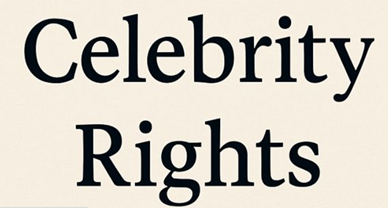May I Have This Dance? Copyrighting Choreography under the Indian Copyright Act
Historically, dance has been an integral part of religion and culture in India. In Hindu mythology, Lord Shiva is known as “Nataraja” (Lord of dance). The Sangeet Natak Akademi (National Academy of Music, Dance, and Drama) currently confers the “classical” status on eight Indian dance forms viz., Bharatnatyam, Odissi, Kuchipudi, Mohiniaattam, Sattriya, Kathakali, Kathak, and Manipuri. Then you have your folk dances, the most popular being the Bhangra (originating from Punjab) and the Garba (originating from Gujarat).
In this day and age, however, dance in India is perhaps best associated with Bollywood. A vast majority of movies made in India are musicals, featuring songs and animated choreography. This trickles down to a great number of televised dance competitions, YouTube tutorials, and of course, that one boisterous uncle that drags you to the dance floor at a wedding sangeet.
But have you ever stopped to think: can a choreographer seek legal protection for their creation? Let’s find out.
Is choreography copyrightable in India?
The Copyright Act, 1957 includes dance under the category of “dramatic work”. Section 2(h) of the Act states that “dramatic work” “includes any piece of recitation, choreographic work or entertainment in dumb show, the scenic arrangement or acting, form of which is fixed in writing or otherwise but does not include a cinematograph film”.
A plain reading of this section stipulates that if an individual wishes to register a copyright in his/her choreography, he/she will have to reduce it to a written format “or otherwise” but shouldn’t include a cinematographic film.
The ambiguity of the words “or otherwise” and the exclusion of “cinematograph film” makes us question the ambit of this section as regards choreography.
Section 2(f) of the Copyright Act defines “cinematograph film” as “any work of visual recording and includes a sound recording accompanying such visual recording and “cinematograph” shall be construed as including any work produced by any process analogous to cinematography including video films”.
Section 2(xxa) of the Act defines “Visual recording” as “the recording in any medium, by any method including the storing of it by any electronic means, of moving images or of the representations thereof, from which they can be perceived, reproduced or communicated by any method.”
In this current techno-driven world of ours, the preferred method for “fixing” a dance routine is through video recording. The exclusion of it under this section, therefore, seems like a disservice to those who wish to register the copyright in their choreography.
Instances where the choreography was granted copyright
The Supreme Court in Academy of General Education, Manipal, and Anr V. MaliniMallya (2009) held that a new version of ballet dance forms part of dramatic work as defined in section 2(h) of the Copyright Act, 1957. It is worthwhile to note, however, that in this case the dance was reduced in literary/written format. Hence, the fate of choreographic works fixed in video recordings is still unclear.
In any case, if the copyright is granted, it shall last throughout the lifetime of the author, and 60 years counted from the year following their death.
Performer’s Rights
While copyrighting of choreographic works may still be in a nascent stage, the provisions in respect of the performer’s rights are quite clear.
Section 38 of the Copyright Act, 1957 provides protection to performers. Section 2 (qq) of the Act states that ‘performer’ “includes an actor, singer, musician, dancer, acrobat, juggler, conjurer, snake charmer, a person delivering a lecture, or any other person who makes a performance”.
The Act provides the recourse of infringement against reproduction, broadcasting, or communication of sound or visual recordings to the public, without the consent of the performer.
Conclusion
While it is clear that choreography is envisaged under the category of “dramatic work” under the Copyright Act, one can’t help but wonder why the fixation of choreography in video recordings is excluded under it.
Nevertheless, it seems that with the general increase in awareness of intellectual property laws, more and more choreographers are willing to explore the idea of copyrighting their work. For instance, in 2013, news reports surfaced that Remo D’Souza – one of Bollywood’s most celebrated choreographers – was planning to copyright his choreography in a movie being directed by him.
I hope that in the coming years, we see a rise in applications to copyright choreographic works, which will hopefully shed more light on the matter and encourage more and more choreographers to safeguard their work.
After all, regardless of whether you enjoy being dragged by the aforementioned boisterous uncle to the dance floor, I think we can all agree that dance as an art form has been underappreciated when it comes to legal support.
Author: Shubham Kshirsagar, BA. LL.B from Indian Law Society (ILS), Pune at IP and Legal Filings and can be reached at support@ipandlegalfilings.com.


